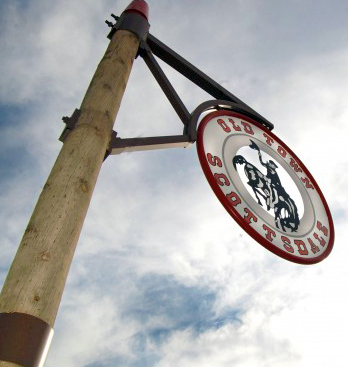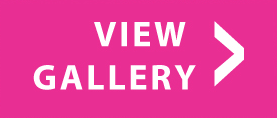Downtown Scottsdale 2.0 analysis describes future possibilities
Life in Scottsdale is evolving — especially in the ways Millennials go about leading their day-to-day lives — and city officials are aiming to plan for the future by determining what could best serve the municipality in 20 to 30 years.
About 50 people attended an early morning meeting May 3 to hear about the findings of Downtown Scottsdale 2.0 — a 10-month long study aiming to plan the future of downtown and Old Town Scottsdale. Born out of a five-year strategic plan for the city’s tourism and events department, Scottsdale 2.0 was a concept created in year one of the plan.
About 8:30 a.m. today community members met in the Community Design Studio for the first of three full-to-capacity community presentations about the study first initiated May 2016.
Lead by CSL International Principal John Kaatz, ideas were presented and brainstorming ensued inside a colorfully painted room inside the design studio, 7506 E. Indian School Road. The two-hour conversation explained a year-old process of looking at communities around the world, and talking to tourism experts including 50 travel writers.
The study includes an economic and planning analysis of the city’s downtown area, focusing on maximizing economic performance and enhancing a desirable, vibrant downtown, according to the city’s website.
In December 2016, CSL International led two open houses for local stakeholders to voice their opinions about the research, concepts and ideas. A number of stakeholders within the Scottsdale area have submitted feedback, including: the 5th Avenue Merchants Association, Hotel Valley Ho, Scottsdale Area Association of Realtors and the Scottsdale Gallery Association.
Ultimately, Downtown Scottsdale 2.0 aims to provide a longterm sustainable environment that will attract multiple generations of visitors and an additional downtown residential population.
“This is a really important study in the tourism perspective, as well as the city perspective,” said city of Scottsdale Tourism and Events Director, Karen Churchard. “Over a process of time, over the years, we’ve really worked on this request for proposal to really do an intensive study of what all we have already studied and planned over the years, as well as look at it from a tourism prospective and visitor’s prospective.”
The tourism department worked with planning, economic and transportation departments as well in order to provide a fully-comprehensive conceptual overview, Ms. Churchard said, noting how important the downtown area is to tourists and the residents.
“It’s really an important aspect that we want to honor, and continue to work through the growth and change of our downtown,” she said.
Bringing people in
Challenges the downtown area faces includes seeing fewer visitors, a lack of a “high end” walking experience, lack of large outdoor space for events, no dedicated transportation option and a need for additional residents to support a bustling downtown area.
“This is not a typical economical development study,” Mr. Kaatz said at the meeting. “This is a study that focuses on the visitor needs. How do we create a destination that can bring in more visitors, more economic impact, more tax revenue, and by doing so you’re also creating something that benefits the residents.”
Areas identified for further examination included routes that could be for trolleys, bicycles or pedestrians; a new hotel with a large conference center; pocket art parks; green space; outdoor festivals; and a monumental piece of art.
“We’ve heard from communities about opportunities for improvement,” he explained. “Where can we grow? Art, artists, the canal, events, lighting, landscaping, more residential, more event space — you can see some themes start to emerge as to where might we invest?”
The need for additional residents downtown is crucial to support a vibrant business landscape. Many attendees identified themselves as a restaurant or business owner, which Mr. Kaatz explained as a crucial part of the puzzle. ScottsdaleAZ.gov states downtown Scottsdale is home to 90 restaurants, 320 retail shops and more than 80 art galleries.
“The problem is when you take a look at it from population and the employee-base downtown we don’t have enough of that to sustain a growing vibrant restaurant and retail industry,” he said. “It’s a seasonal business — if you don’t have the base from residents, visitors and ideally office workers to sustain these businesses it doesn’t do much to push you down.”
Mr. Kaatz says the goal isn’t to simply bring in more people, his goal is to build a better destination.
The downtown Scottsdale residential population goal should be 8,200 residents by 2025, which would require an additional 1,050 residential units Mr. Kaatz said.
“When you look at your restaurant and retail base, that’s starting to come into balance. If I’m a business owner, not overwhelming resident presence but a resident presence that allows us to grow into the infrastructure,” he said.
Ultimately, the goal is to attract visitors, and a more populated downtown is an aspect visitors like. For every visitor dollar, that’s one dollar residents aren’t responsible for, Mr. Kaatz said.
Looking to the future
“How do we bring in small businesses in the downtown area?” Mr. Kaatz asked the audience. While there’s no large parcels of land available for development in the downtown area, there are several plats ranging between 3,000- to 6,000-square-feet that could suit a number of entities.
Looking to the future
“How do we bring in small businesses in the downtown area?” Mr. Kaatz asked the audience. While there’s no large parcels of land available for development in the downtown area, there are several plats ranging between 3,000- to 6,000-square-feet that could suit a number of entities.
“I’m not too concerned of this notion of over-building, as long as you’re in the right market,” Mr. Kaatz said, of the concern that additional retail will hurt existing shops.
“Old Town has to be Old Town. The density and the scale of the buildings need to be Scottsdale scale, not 30 stories. So look at Scottsdale Road, you’ve got a bunch of vacant parking lots. Imagine if they were two-two and a half-story buildings with retail, that’s the kind of thing we’re talking about.”
Mr. Kaatz wants to focus on the “arts sector” approach, and had a variety of small and large ideas to incorporate activities, performances, attractions and art to the area.
Ideas included an emerging artist spotlight, a grapes and galleries concept, small artist performances under shade structures and in green spaces, and large-scale art such as Cloud Gate Sculpture, also known as “the bean” in Chicago.
The number one opportunity to bring in the right customers to galleries is to host more festivals, Mr. Kaatz said. Scottsdale’s beloved Canal Convergence has been a model-event for the city, and has recently been approved to be held in the fall now, and has been given additional revenue.
By creating an environment and experience, Mr. Kaatz believes visitors and residents will both be drawn to the downtown area.
“Not overnight, but overtime we think we can create this,” he said.
Many residents brought up the issue of parking and traffic, which Mr. Kaatz says will be addressed further in the process. None of the proposed plans or ideas presented in the Downtown Scottsdale 2.0 study were included with a price.







